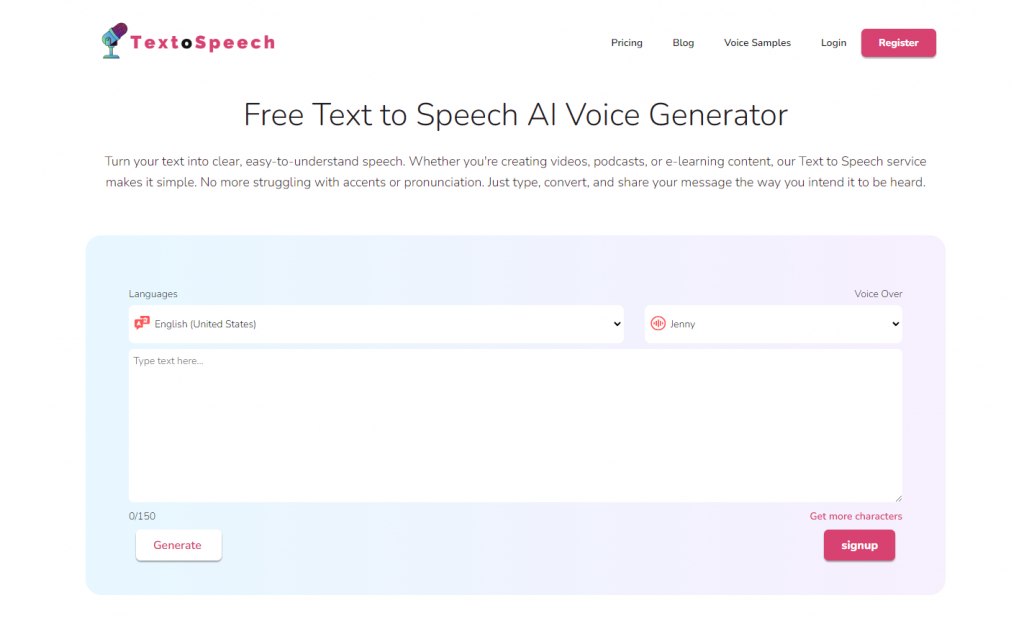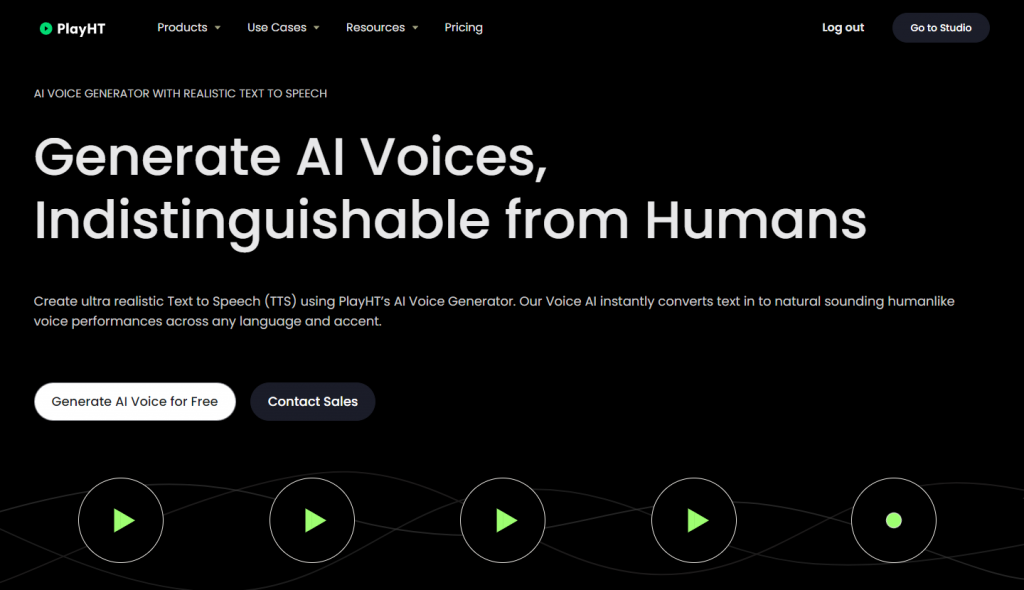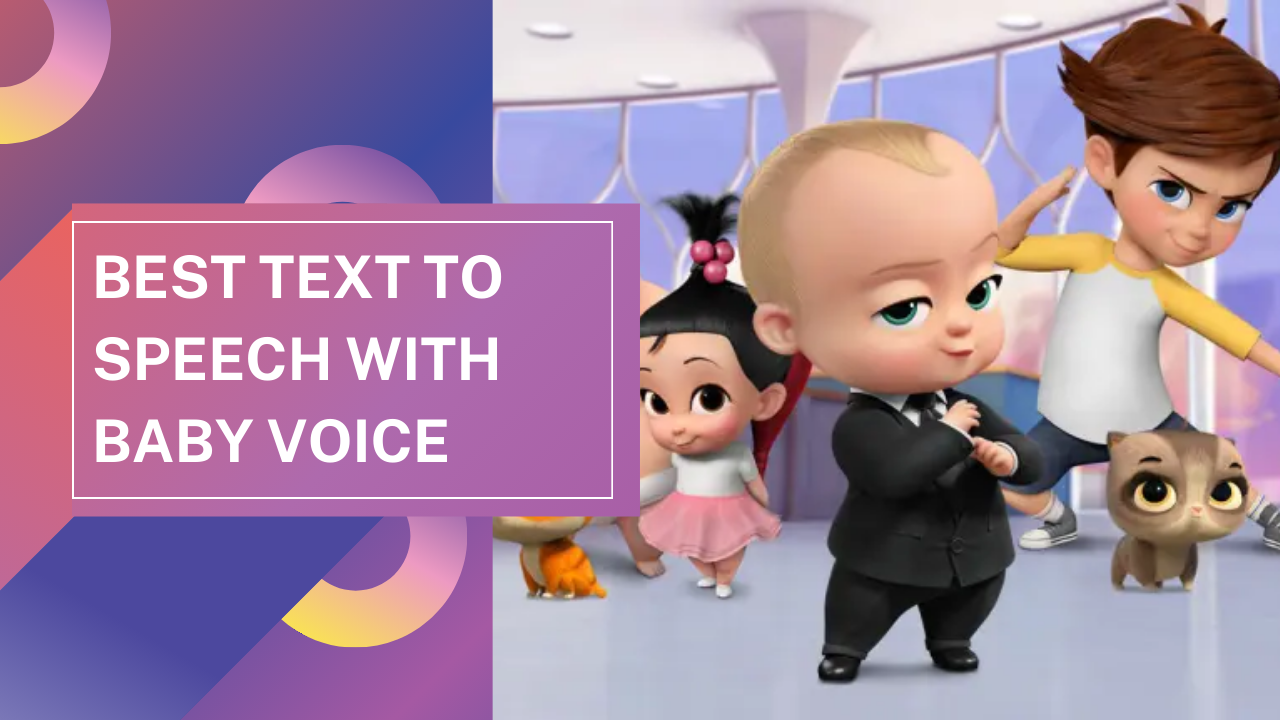Text to Speech (TTS) technology has come a long way, and now it even includes voices that sound like a baby. These tools are great for creating fun, engaging content and appealing to a young audience. They use advanced technology to mimic a baby’s voice, making stories or educational material more relatable.
In this article, we will discuss the features, pros and cons, price, and best alternatives. These top 5 Text to Speech tools with baby voices, whether it’s for storytelling, education, or entertainment.
Why Text to Speech With Baby Voice?
Text to speech technology with a baby voice can be very helpful. It’s used mainly in apps and devices for children. The baby voice is easy for kids to listen to and understand. This helps in learning and entertainment.
Companies make these voices sound very real. They do this so children feel like they are listening to someone like them. This makes learning fun and engaging for kids. It’s a smart way to teach them new things.
Using a baby voice in text to speech also helps parents. It can keep kids busy and make them happy. It’s a useful tool in today’s digital world where technology is a big part of learning and playing.
Top 5 Best Text to Speech With Emotions
1. TextoSpeech

TextoSpeech is a website that offers a unique text-to-speech service. It allows users to convert written text into spoken words. The standout feature of this site is its baby voice option. This means you can hear your text read out in a cute, baby-like voice.
This tool is handy for creating kid-friendly content or for entertainment purposes. Using the service is easy. You simply type or paste your text into their website. Then, choose the baby voice option.
The site will then read your text in a baby voice. This feature is great for story-telling, making fun videos, or just for a good laugh. TextoSpeech makes it simple to bring a playful twist to your text.
Features of TextoSpeech
- Supports over 50 languages and 300 voices, providing a diverse range of content needs.
- Provides an easy-to-use text editor with real-time preview for fine-tuning voiceovers.
- Flexible pricing plans, including a free version, low-cost subscription options for advanced features, and a lifetime plan.
- Natural-sounding voices that are ideal for YouTube videos and multimedia projects.
- Web-based platform, ensuring accessibility and convenience without the need for software installation.
- Fast processing speeds allow for faster turnaround on voiceover projects, increasing productivity.
Pros and cons of TextoSpeech
Pros
- Variety of Voices and Languages
Ease of Use
Time-Saving
Cost-Effective
Consistency
Accessibility
Cons
- Limited Features in Free Version
Lack of offline functionality
2. Speechify

Speechify is a text to speech tool that can turn written words into spoken words. It’s special because it has a baby voice option. This means you can make it sound like a baby is reading the text.
This is fun and can be useful for creating content for kids or just for entertainment. You just need to type or paste the text you want to read aloud. Then, you choose the baby voice option. The tool will read the text in a cute, baby-like voice.
This feature is great for parents, teachers, or anyone who wants to make reading more engaging for children. Plus, it’s a friendly and simple way to make learning fun.
Features
- Speechify offers over 30 languages and a wide range of 130+ voices, including natural-sounding and celebrity-like options.
- Includes reading speed control, highlighting text as it’s read, and converting text from books, PDFs, and web pages.
- Integrates with browsers and mobile devices, allowing seamless text-to-speech conversion across different platforms.
- Offers a free version with basic features and a premium plan with advanced capabilities like more voices and offline listening.
- High-quality voice synthesis, providing clear and natural-sounding audio for various content types.
- User-friendly interface, making it easy for users of all skill levels to navigate and use the tool effectively.
- Multi-device compatibility, supporting usage across computers, smartphones, and tablets for consistent accessibility.
Pros and cons
Pros
- Accessibility
- Language Learning
- Productivity
- OCR technology
- Support for Multiple Platforms
Cons
- Naturalness of Voice
- Accuracy and Pronunciation
- Subscription Costs
- Limited Context Understanding
3. Murf AI

Murf AI Murf AI is a tool where you can choose a baby voice. This means you can make your written words sound like a small child is saying them. It’s useful for creating fun and engaging content, especially if you need a child’s voice.
Using this baby voice feature is easy. You type what you want to say, and Murf AI reads it out in a baby voice. This is great for stories, ads, or learning materials for kids. It makes listening more interesting and can help in teaching kids in a fun way.
Features
- Murf AI offers over 120 voices across 20 different languages, catering to a global user base.
- Includes voice cloning, AI dubbing, and integration with Canva for enhanced voice-over capabilities.
- Advanced text-to-speech editor, voice modulation options, and real-time voice editing for precise control.
- Flexible pricing plans, including a free trial, basic, pro, and enterprise levels, to suit different user needs.
- High-quality, lifelike AI voices are ideal for professional and personal projects.
- User-friendly interface, making it accessible for beginners and experts alike.
- Extensive library of AI voices, including options for different ages, accents, and styles.
Pros and cons
Pros
- Wide variety of voices
- Extra Effects
- Google Slides Add-on
Performance - Scalability
Cons
- Cost
Learning Curve - Reliability
- Customization
4. Play HT

Play HT offers a service that turns written text into speech. They use AI to make the voices sound real, like a human’s. This is great for many uses, like making videos or teaching online.
They have a lot of different voices and can make them sound like they are from many places in the world. One special thing they offer is a “baby voice”. This means you can make the AI sound like a small child.
This is really useful for content made for kids or to make things sound cute. PlayHT makes it easy to use these voices for many different projects. It’s a helpful tool for people who need to turn text into speech, especially in a way that sounds natural and real.
Features
- Murf AI offers over 120 voices across 20 different languages, catering to a global user base.
- Includes voice cloning, AI dubbing, and integration with Canva for enhanced voice-over capabilities.
- Advanced text-to-speech editor, voice modulation options, and real-time voice editing for precise control.
- Flexible pricing plans, including a free trial, basic, pro, and enterprise levels, to suit different user needs.
- High-quality, lifelike AI voices are ideal for professional and personal projects.
- User-friendly interface, making it accessible for beginners and experts alike.
- Extensive library of AI voices, including options for different ages, accents, and styles.
Pros and cons
Pros
- Wide variety of voices
- Extra Effects
- Google Slides Add-on
Performance - Scalability
Cons
- Cost
Learning Curve - Reliability
- Customization
5. Revoicer

Revoicer is an online tool that creates realistic AI-generated voiceovers. It is simple to use and needs no downloads. This tool is perfect for anyone, regardless of technical skills. You just paste your text, pick a voice, and generate the voiceover.
Revoicer offers over 80 AI voices, including a baby voice, in multiple languages. These voices sound natural and can express emotions like happiness or sadness. This makes your content engaging.
You can use Revoicer for various projects, like sales videos, podcasts, and educational content. It’s a quick, efficient alternative to traditional voiceover methods. Revoicer changes how we create voiceovers, making it easier for everyone.
Pros And Cons of Revoicer
Pros
- Accessibility
- Convenience
- Variety of Uses
- Time-Saving
Cons
- Unrealistic Voices
- Language Limitations
- Bad Context Understanding
FAQs
What is Text to Speech with Baby Voice?
Text to Speech with Baby Voice is a technology that converts written text into spoken words using a synthesized voice that sounds like a baby. It’s used in various applications like storytelling, educational content for children, or entertainment purposes.
How does Text to Speech with Baby Voice work?
This technology uses advanced algorithms to process written text and convert it into speech. The baby’s voice is generated through specific settings in the TTS software, which modify pitch, speed, tone, and other elements to mimic the sound of a baby’s voice.
Can I customize the baby voice in a TTS application?
Yes, many TTS applications allow customization of the baby voice. Users can typically adjust the pitch, speed, and sometimes the emotional tone of the voice to suit their specific needs.
Is Text to Speech with Baby Voice available in multiple languages?
The availability of baby voice in multiple languages depends on the TTS software. Some advanced TTS programs offer multilingual support, including baby voice options in different languages.
Conclusion
Text-to-speech technology has advanced a lot. Now, it can even mimic a baby’s voice. This makes it useful for different needs, like making kids content.
TextoSpeech is one such tool. It’s good for making baby voices and is easy to use. This technology is changing how we create and interact with digital content, making it more varied and fun.

